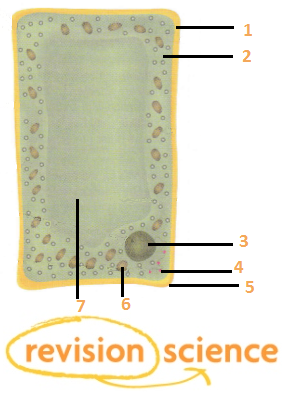Structure of Cells
Structure of Cells
Cells form the basis of all life. All of the processes of life take place within cells. There are numerous different types of specialised cell but all cells have common features. There are two main categories of cells these are prokaryotic (prokaryotes) and eukaryotic (eukaryotes).
Prokaryotes
Prokaryotes are a type of simple cell such as archaebacteria and bacteria. Archaebacteria are considered to be an ancient form of life that evolved separately from bacteria, they have a different type of cell wall and a different genetic code to bacteria. They include microorganisms that can use sulphur of methane as a means of nutrition (thermoacidophiles and methanogens).
Prokaryotic Cells:
- Do not have a nucleus
- Have cytoplasm, a cell membrane and a cell wall
- Are smaller than eukaryotic cells
- Have genetic material in the form of a DNA loop and rings of DNA called plasmids
Prokaryotic and Eukaryotic cells are only visible with a microscope.
The image below shows a Bacterium

- Plasmid DNA (small usually circular section of DNA that can replicate independently of chromosomal DNA)
- Cytoplasm
- Cell wall (this provides structural support to the bacteria – this is not made of cellulose).
- Ribosomes (where protein is made)
- Chromosomal DNA (this is not found in the nucleus, usually found in one circular chromosome).
- Flagella (tail like structures which rotate to help bacteria move).
Eukaryotes
Eukaryotic cells:
- Are much more complex than Prokaryotic cells (they contain a cell membrane, cytoplasm and genetic material enclosed in the nucleus)
- Contain organelles (membrane bound structures), where specific functions are carried out.
- Are found in animals, plants, fungi and protists.
The below images show the main organelles in plant and animal cells
Typical animal cell

Typical plant cell

- Cell membrane (this controls the movement in and out of the cell; plus receptor molecules. It is also a selective barrier)
- Cytoplasm (where chemical reactions take place)
- Nucleus (this controls the cell and contains the cell’s genetic information)
- Ribosome (where protein synthesis occurs)
- Cellulose cell wall (this strengthens and supports the cell)
- Chloroplast (this contains chlorophyll and absorbs light for photosynthesis)
- Permanent Vacuole (filled with cell sap, it helps to support the cell)
Plant cells are more regular in shape then animal cells, as they have additional structures: cell wall, sap vacuole and in some cases chloroplasts.
